Makes and Models
Best People Movers for 2021
There are those of us who would rather avoid being seen in what are technically called ‘People Movers’. By choice, they’re not a car that many would prefer over a roadster or GT. However, they do have their place and the current new people movers are stacked with the latest goodies, are comfortable and work hard to make their cabins a pleasant, safe space for plenty of people to spend time journeying in. Of course, the space and comfort throughout a people mover cabin is, generally, superb, making them ideal at doing what they say they will on the tin. So, if you have been particularly virile and require a decent vehicle for moving your large family about, or you just need those extra seats and space, then here are the newest people movers available on the market in 2021:
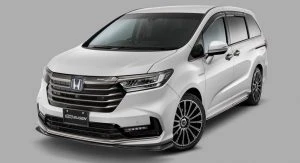
Honda Odyssey
Available in a 2.4-litre ULP, 129 kW, 225 Nm, 7-speed CVT, FWD, combined fuel consumption of around 8-9 litres/100 km, towing 450 kg un-braked and 1000 kg braked, 5-star ANCAP rating, seven seats, Honda Odyssey ViL7 (around $49k) and Honda Odyssey ViLX7 (around $56k), 5 yr/unlimited km warranty.
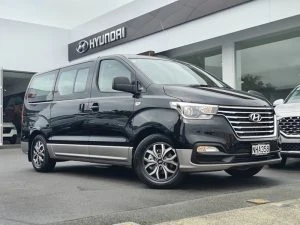
Hyundai iMax
Available in a 2.5-litre Turbo Diesel, 125 kW, 441 Nm, 5-speed automatic, RWD, combined fuel consumption of around 9 litres/100 km, towing 750 kg un-braked and 1500 kg braked, 4-star ANCAP rating, eight seats, Hyundai iMax Active (around $49k) and Hyundai iMax Elite (around $54k), 5 yr/unlimited km warranty with 1yr Roadside assistance.
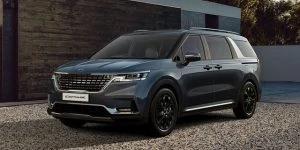
Kia Carnival
Available in a 3.5-litre ULP, 216 kW, 355 Nm, 8-speed automatic, FWD, combined fuel consumption of around 10 litres/100 km, towing 750 kg un-braked and 2000 kg braked, ANCAP rating untested but previous model was 5-star, eight seats, Kia Carnival S (around $51k), Kia Carnival Si (around $56k), Kia Carnival SLi (around $61k), Kia Carnival Platinum (around $68k), 7 yr/unlimited km warranty with 1yr Roadside assistance.
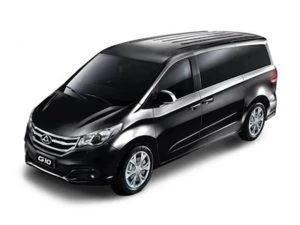
LDV G10
Available in a 1.9-litre Turbo Diesel with 110 kW and 350 Nm or a 2.0-litre ULP with 165 kW and 330 Nm. 6-speed automatic, RWD, combined fuel consumption of around 9 litres/100 km for the Turbo Diesel and 12 litres/100 km for the ULP. Towing 750 kg un-braked and 1750 kg braked for the Turbo Diesel and 750 kg un-braked and 1500 braked for the ULP. 3-star ANCAP rating, seven seats, LDV G10 Turbo Diesel (around $35k) and LDV G10 Executive (around $38k), 3 yr/100,000 km warranty.
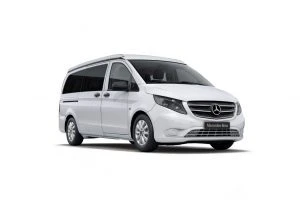
Mercedes-Benz Marco Polo ACTIVITY 220d
Available in a 2.1 Turbo Diesel, 120 kW, 380 Nm, 7-speed automatic, RWD, combined fuel consumption of around 7 litres/100 km, towing 750 kg un-braked and 2500 kg braked, 5-star ANCAP rating, seven seats, Mercedes-Benz Marco Polo ACTIVITY 220d (around $86k), 5 yr/unlimited km warranty and 5 yr roadside assist.
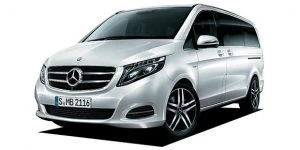
Mercedes-Benz V-Class V220 d
Available in a 2.1 Turbo Diesel, 120 kW, 380 Nm, 7-speed automatic, RWD, combined fuel consumption of around 7 litres/100 km, towing 750 kg un-braked and 2500 kg braked, 5-star ANCAP rating, seven seats, Mercedes-Benz V-Class V220 d (around $94k), Mercedes-Benz V-Class V220 d Avantgarde (around $111k), 5 yr/unlimited km warranty and 5 yr roadside assist.
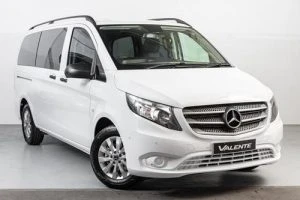
Mercedes-Benz Valente 116CDI
Available in a 2.1 Turbo Diesel, 120 kW, 380 Nm, 7-speed automatic, RWD, combined fuel consumption of around 7 litres/100 km, towing 750 kg un-braked and 2500 kg braked, 5-star ANCAP rating, eight seats, Mercedes-Benz Valente 116CDI (around $72k), 5 yr/250,000 km warranty and 5 yr roadside assist.
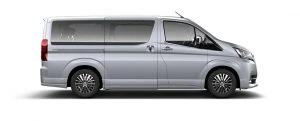
Toyota Granvia
Available in a 2.8-litre Turbo Diesel, 130 kW, 450 Nm, 6-speed automatic, RWD, combined fuel consumption of around 8 litres/100 km, towing 400 kg un-braked and 1500 kg braked, 5-star ANCAP rating, six seats, Toyota Granvia (around $65k) and Toyota Granvia VX (around $76k), 5 yr/unlimited km warranty.
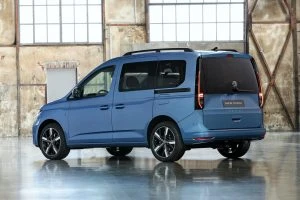
Volkswagen Caddy
Available in a 1.4-litre Premium ULP, 92 kW, 220 Nm, 7-speed automatic, FWD, combined fuel consumption of around 6.5 litres/100 km, towing 630 kg un-braked and 1300 kg braked, 4-star ANCAP rating, 5 or 7 seats, Volkswagen Caddy Trendline 5 seats (around $35k) and Volkswagen Caddy Comfortline 7 seats (around $41k), 5 yr/unlimited km warranty, 1 yr roadside assist.
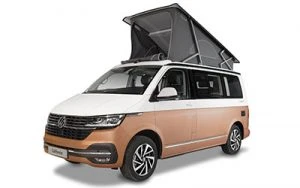
Volkswagen California Beach
Available in a 2.0-litre Turbo Diesel RWD with 110 kW and 340 Nm or a 2.0-litre Twin Turbo Diesel 4WD with 146 kW and 450 Nm. 7-speed automatic, combined fuel consumption of around 7 to 8 litres/100 km, towing 750 kg un-braked and 2500 kg braked, 4-star Euro NCAP rating, 5 or 7 seats, Volkswagen California Beach TDI340 7 seats (around $83k) and Volkswagen California Beach TDI450 4×4 5 seats (around $93k), 5 yr/unlimited km warranty, 1 yr roadside assist.
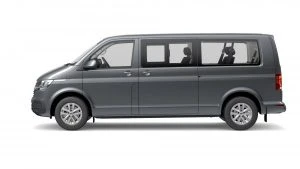
Volkswagen Caravelle TDI340 Trendline
Available in a 2.0-litre Turbo Diesel FWD, 110 kW, 340 Nm, 7-speed automatic, combined fuel consumption of around 7 litres/100 km, towing 750 kg un-braked and 2500 kg braked, 4-star Euro NCAP rating, 9 seats, Volkswagen Caravelle TDI340 Trendline (around $65k) 5 yr/unlimited km warranty, 1 yr roadside assist.
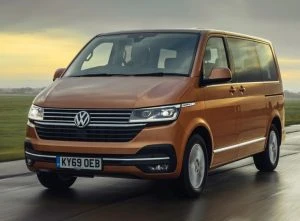
Volkswagen Multivan
Available in a 2.0-litre Turbo Diesel FWD with 110 kW and 340 Nm or a 2.0-litre Twin Turbo Diesel 4WD with 146 kW and 450 Nm. 7-speed automatic, combined fuel consumption of around 7 to 8 litres/100 km, towing 750 kg un-braked and 2500 kg braked, 4-star Euro NCAP rating, 7 seats, Volkswagen Multivan TDI 340 Comfortline (around $62k), Volkswagen Multivan TDI450 Highline (around $85k), Volkswagen Multivan TDI450 Comfortline (around $88k), 5 yr/unlimited km warranty, 1 yr roadside assist.
Korean Teasers: Kia EV6 And Hyundai Kona N
Kia Corporation has revealed the first official images of the EV6 – its first dedicated battery electric vehicle (BEV) built on the company’s new EV platform (Electric-Global Modular Platform or E-GMP). EV6 is also the first of Kia’s next-generation BEVs to be developed under a new design philosophy that embodies Kia’s shifting focus towards electrification. “EV6 is the embodiment of both our brand purpose, ‘Movement that inspires’, and our new design philosophy. It has been designed to inspire every journey by offering an instinctive and natural experience that improves the daily lives of our customers and provide user ownership that is simple, intuitive and integrated,” said Karim Habib, Senior Vice President and Head of Kia Global Design Center. “Our aim is to design the physical experience of our brand and to create bold, original and inventive electric vehicles.”
“EV6 is the embodiment of both our brand purpose, ‘Movement that inspires’, and our new design philosophy. It has been designed to inspire every journey by offering an instinctive and natural experience that improves the daily lives of our customers and provide user ownership that is simple, intuitive and integrated,” said Karim Habib, Senior Vice President and Head of Kia Global Design Center. “Our aim is to design the physical experience of our brand and to create bold, original and inventive electric vehicles.” As part of the company’s brand transition, Kia’s new dedicated battery electric vehicles will be named according to a new naming strategy. The new approach brings simplicity and consistency to Kia’s EV nomenclature across all global markets.
As part of the company’s brand transition, Kia’s new dedicated battery electric vehicles will be named according to a new naming strategy. The new approach brings simplicity and consistency to Kia’s EV nomenclature across all global markets. All of Kia’s new dedicated BEVs will start with the prefix ‘EV’ which makes it easy for consumers to understand which of Kia’s products are fully electric. This is followed by a number which corresponds to the car’s position in the line-up.
All of Kia’s new dedicated BEVs will start with the prefix ‘EV’ which makes it easy for consumers to understand which of Kia’s products are fully electric. This is followed by a number which corresponds to the car’s position in the line-up.
Designed and engineered to embody Kia’s new brand slogan, ‘Movement that inspires’, EV6 will make its world premiere during the first quarter of 2021. Hyundai Motor has revealed a glimpse of the all-new KONA N without its camouflage disguise. In a series of teaser images, fans and enthusiasts can enjoy a first look at the latest member of the brand’s high-performance N range.
Hyundai Motor has revealed a glimpse of the all-new KONA N without its camouflage disguise. In a series of teaser images, fans and enthusiasts can enjoy a first look at the latest member of the brand’s high-performance N range.
The all-new KONA N will be the latest addition to the Hyundai N brand line-up, and the first N model with an SUV body type. As the first images reveal, the ‘hot SUV’ boasts a sporty appearance, further emphasised by its wide, low stance. For the very first time, the Hyundai N division and Hyundai Design Centre worked together to develop on an SUV body type, creating a product that clearly represents a powerful presence and driving fun. The all-new KONA N combines the modern design of the recently launched new KONA with the bold and dynamic language of the company’s N models.
As the first images reveal, the ‘hot SUV’ boasts a sporty appearance, further emphasised by its wide, low stance. For the very first time, the Hyundai N division and Hyundai Design Centre worked together to develop on an SUV body type, creating a product that clearly represents a powerful presence and driving fun. The all-new KONA N combines the modern design of the recently launched new KONA with the bold and dynamic language of the company’s N models. The front view is dominated by large, sporty and iconic air intakes, and the new light signature gives Hyundai’s latest high-performance model an aggressive, powerful appearance. The lower grille defines the character of the bumper fascia: its shape is inspired by an aeronautic fuselage and extends to the side of the car, emphasising its aerodynamic efficiency and speed. An N logo on the unique upper grille completes the look.
The front view is dominated by large, sporty and iconic air intakes, and the new light signature gives Hyundai’s latest high-performance model an aggressive, powerful appearance. The lower grille defines the character of the bumper fascia: its shape is inspired by an aeronautic fuselage and extends to the side of the car, emphasising its aerodynamic efficiency and speed. An N logo on the unique upper grille completes the look.
At the rear, a large double-wing roof spoiler for enhanced downforce gives spice to the rear view. It also incorporates a third, triangular brake light, as is customary with N models. Large N dual exhaust mufflers fully express the model’s high-performance spirit. Lower down on the rear bumper, a large diffuser enhances the airflow departure. The sporty appearance is further emphasised through body-coloured fenders, bringing KONA N visually closer to the ground.
Large N dual exhaust mufflers fully express the model’s high-performance spirit. Lower down on the rear bumper, a large diffuser enhances the airflow departure. The sporty appearance is further emphasised through body-coloured fenders, bringing KONA N visually closer to the ground.
The all-new KONA N is equipped with the eye-catching features reserved for N models, such as exclusive alloy wheels and red accents that embellish the side sills.  (Information supplied courtesy of Kia and Hyundai.)
(Information supplied courtesy of Kia and Hyundai.)
2021 Toyota Yaris Cross GXL 2WD Hybrid: Private Fleet Car Review.
Toyota started the SUV phenomenon with the original RAV4. Surprisingly, it’s a bit late to a party it helped plan, with the city SUV Yaris Cross coming after other brands have released similar vehicles. There’s a three model range with GX, GXL, and Urban, and a 2WD, 2WD Hybrid, and AWD Hybrid, the same as found in the newest RAV4. Each have a 3 cylinder, 1.5L petrol engine, the same as now found in the Yaris hatches. Pricing for the GX starts from $30,447 in Ink Black, 2WD and non-hybrid, with metallics, including the Mineral Blue found on the review vehicle, to $30,962. The pricing matrix can be slightly confusing so follow this link to find a price for your location and specification. Our Mineral Blue GXL Hybrid 2WD starts from $36,168 drive-away for our location.
Pricing for the GX starts from $30,447 in Ink Black, 2WD and non-hybrid, with metallics, including the Mineral Blue found on the review vehicle, to $30,962. The pricing matrix can be slightly confusing so follow this link to find a price for your location and specification. Our Mineral Blue GXL Hybrid 2WD starts from $36,168 drive-away for our location.
The important parts of the Yaris Cross are the engine package and the size of the body. On the first point, we’ll admit to being somewhat baffled by the numbers. In non-hybrid trim, the 1.5L triple cylinder is rated, says Toyota, at 88kW and 145Nm. The hybrid package is 85kW and 120Nm……Economy isn’t hugely different at 5.4L/100km to 3.8L/100km on the combined cycle, with 91RON and a tank of 42L or 36L in the Hybrid. Transmission is a CVT with ten preprogrammed ratios and includes a mechanical first gear for better off the line acceleration. The AWD version has a separate rear axle electric motor and can take up to 60% of the torque when the drive sensors says so. Sizewise, the Yaris Cross sits on a 2,560mm wheelbase, with a total length of 4,180mm. There’s a height of 1,590mm, and width of 1,765mm. In comparison the Hyundai Kona in 2020 spec is 4,205mm and 1,550mm long and high on a 2,600mm wheelbase. Wheels for the GX and GXL are 16 inch diameter alloys, with rubber at 205/65 and from Bridgestone’s Turanza range.
Sizewise, the Yaris Cross sits on a 2,560mm wheelbase, with a total length of 4,180mm. There’s a height of 1,590mm, and width of 1,765mm. In comparison the Hyundai Kona in 2020 spec is 4,205mm and 1,550mm long and high on a 2,600mm wheelbase. Wheels for the GX and GXL are 16 inch diameter alloys, with rubber at 205/65 and from Bridgestone’s Turanza range.
That SUV body gives it an extra 30mm ground clearance than its hatchback sibling and stands taller by 90mm, spreads wider by 20mm and is longer by 240mm..
In profile, the Yaris Cross bears an unsurprisingly striking resemblance to bigger sibling RAV4, complete with bulldog blunt nose, a kicked up rear, and steeply angled tailgate line. The cargo door opens to a 390L space (314L in Urban) which houses a spacesaver spare. The Urban gets the goo kit.
The front is perhaps the blandest part of the Yaris Cross, and one of the blandest seen on a car in recent times. It looks nothing like the standard Yaris hatch nor the GR versions; they, at least, still have a family resemblance. Here we see a pair of intakes split by a body coloured strip, a pair of vertical LED strips, and darkened headlight covers. Body moldings for the wheel arches are joined by a thick slab on the sills which has the car’s name embossed in. Inside it’s not quite as bland. The dash is the same as the hatch, with a pair of smaller dials set ahead of an information screen. The left dial shows the energy status of the drive on the go, from charge to Eco, to Power. Speed and fuel tank info are on the right. The centre screen shows battery and drive flow information, audio, economy (3.9L/100km) was our final average). satnav and DAB are included in the main 7.0 inch touchscreen.
Inside it’s not quite as bland. The dash is the same as the hatch, with a pair of smaller dials set ahead of an information screen. The left dial shows the energy status of the drive on the go, from charge to Eco, to Power. Speed and fuel tank info are on the right. The centre screen shows battery and drive flow information, audio, economy (3.9L/100km) was our final average). satnav and DAB are included in the main 7.0 inch touchscreen. In the console are the switches for the drive modes (Normal, Eco, Sport), traction control, and EV mode. As is the norm for Toyota, the petrol engine kicks in on anything other than a light throttle. The drive selector has a B for Brake, which harvests energy from the braking. There is only one USB port and no offering of a wireless charge pad. Plastics are of an average look and the steering wheel insert was slightly loose and squeaky.
In the console are the switches for the drive modes (Normal, Eco, Sport), traction control, and EV mode. As is the norm for Toyota, the petrol engine kicks in on anything other than a light throttle. The drive selector has a B for Brake, which harvests energy from the braking. There is only one USB port and no offering of a wireless charge pad. Plastics are of an average look and the steering wheel insert was slightly loose and squeaky.
Rear seat leg room is tight, quite tight. Adults would struggle to be comfortable and lanky teenagers don’t quite fit. A centre portion of the 60% part of the 60/40 seats has a pair of cupholders and that’s as much in the way of extra convenience items the rear seat passengers in the GXL will have. Having said that, the actual comfort level of sitting in the cloth covered seats is good, with plenty of support and the fronts eats have good lumbar support too. As a driving package the Yaris Cross demonstrates that even Toyota can get it wrong. The driveline exhibits the same bang and shunt as experienced in the Yaris ZR Hybrid as the throttle is applied or lifted. At times, in opposition, it’s smooth and seamless as the petrol engine kicks in and out, and noticable more on light throttle applications.. The 1.5L is raucous at times, and the insulation under the bonnet is thin, allowing plenty of noise through. Toyota have also located the bonnet strut directly above the engine. The doors aren’t well insulated either, which means external noises filter through easily, and the lack is noticeable when closing the doors. There’s a tinny “thunk”, not a satisfyingly weighted thump.
As a driving package the Yaris Cross demonstrates that even Toyota can get it wrong. The driveline exhibits the same bang and shunt as experienced in the Yaris ZR Hybrid as the throttle is applied or lifted. At times, in opposition, it’s smooth and seamless as the petrol engine kicks in and out, and noticable more on light throttle applications.. The 1.5L is raucous at times, and the insulation under the bonnet is thin, allowing plenty of noise through. Toyota have also located the bonnet strut directly above the engine. The doors aren’t well insulated either, which means external noises filter through easily, and the lack is noticeable when closing the doors. There’s a tinny “thunk”, not a satisfyingly weighted thump.
Steering is light, and the chassis is easily upset over bumps, but minimally changes the direction of the nose. It’s twitchy at times, and light cross winds had the Yaris Cross move around. It’s less composed than expected, all around, with an unsettled ride more often than not the sensation, rather than a well mannered experience. In small spaces, such as roads for a three point turn, underground carparks in shopping centres, and general daily driving, the fidgety handling becomes a benefit, as the short body and the light steering make moving the Yaris Cross around in these environments easy. On both sides of the drive, the Bridgestone rubber squealed… The same applies to the drive; it’s by no means a rocketship, even allowing for the CVT and the battery. Sink the slipper and the 1.5L yells its three cylinder noise, the CVT sees the rev count climb, and forward pace is …leisurely. It’s been timed elsewhere as something around the 11 to 12 second mark to reach 100kph. Again, the Yaris Cross points towards being better suited for the urban environment rather than the outer ‘burbs.
The same applies to the drive; it’s by no means a rocketship, even allowing for the CVT and the battery. Sink the slipper and the 1.5L yells its three cylinder noise, the CVT sees the rev count climb, and forward pace is …leisurely. It’s been timed elsewhere as something around the 11 to 12 second mark to reach 100kph. Again, the Yaris Cross points towards being better suited for the urban environment rather than the outer ‘burbs.
There is a good safety package as standard across the range. A pedestrian and cyclist calibrated anti-collision system is standard, as is Lane Trace Assist, Intersection Turn Assistance, and Traffic Sign recognition for speed signs. The GX misses out on Blind Spot Monitor and Rear Cross Traffic Alert. There are eight airbags, including two between the front passengers and, in a first for Toyota in Australia, an SOS function which can call an emergency centre at the press of a button or automatically in the event of airbag deployment. Warranty is a five year/unlimited kilometre mix, with servicing capped at $205 for a cycle of 15,000 kilometres. Battery warranty is ten years.
Warranty is a five year/unlimited kilometre mix, with servicing capped at $205 for a cycle of 15,000 kilometres. Battery warranty is ten years.
At The End Of The Drive.
City SUVs appear to be “the next big thing” in a crowded marketplace and although Toyota hasn’t lead the charge in this segment, it lobs a solid, if uninspiring, entry. It’s clearly marketed (and engineered, we think too) at a couple with no or one small child, making it an ideal second car too. The ride quality deters from really exploring its envelope as it’s dynamically off-par. But punt it at city velocities and it’s at home.
But, and yes, there has to be another but, it’s the price. Consider the Mazda CX-3 which ranges from $22,710 to $38,450, Ford’s new Puma ($29,990 to $35,540), Subaru’s XV, ($29,240 – $35,580), and the VW T-Cross ($27,990 – $30,990). Hybrid tech does factor but for some the drive quality will turn them away.
Ford Transit 12 Seater Bus: An Icon Returns.
Ford Australia has added the 12-seater Ford Transit Bus to the popular Transit line-up. The 410L RWD 12 Seat Bus comes with a 2.0.L EcoBlue diesel with 125kW of power and 390Nm of torque from 1,600-2,300 rpm, driving a ten speed auto and starts from $63,690 (Manufacturer’s Recommended List Price). Options include High Roof with Overhead Stowage Shelves is $2,500, Prestige Paint is $650 and Satellite Navigation with TMC & Enhanced Voice Control is $600. The engine is EURO 6.2 compliant and standard across the range. It features high-pressure direct fuel injection, an advanced aluminium cylinder head, a high-performance variable geometry turbo plus auto stop-start for maximum fuel efficiency and lower running costs. Service intervals are 30,000km or 12 months.
The engine is EURO 6.2 compliant and standard across the range. It features high-pressure direct fuel injection, an advanced aluminium cylinder head, a high-performance variable geometry turbo plus auto stop-start for maximum fuel efficiency and lower running costs. Service intervals are 30,000km or 12 months.
The Ford Transit Bus along with all Transit vehicles, comes with AEB with Pedestrian Detection as standard. There is also Adaptive Cruise Control, Blind Spot Information System (BLIS) with Rear-Cross Traffic Alert, Lane Keeping Aid and Lane Departure Warning with Driver Alert, plus Traffic Sign Recognition. There is also Automatic High-beam, Automatic headlamps, Automatic front windscreen wipers and a heated windscreen. Front and rear park sensors and a rear camera round out the safety package.
A programmable MyKey and FordPass Connect provide a range of services, along with smartphone access, including remote start and stop, allowing drivers to start their vehicle’s engine with a tap of their smartphone in order to heat or cool the cabin before driving.  Info and technology are accessed via the 8.0 inch touchscreen which operates Ford’s latest SYNC 3 infotainment system with Apple and Android apps as standard and optional voice activated satnav. It also gives access to FordPass Connect, which offers convenient ‘connected car’ technology, pairing with the available FordPass App to simplify customers’ ownership experience and unlock a range of new services including Remote Start and Stop, Remote Lock and Unlock, Live Traffic Updates, Location Services, Vehicle Status and Health Alerts.
Info and technology are accessed via the 8.0 inch touchscreen which operates Ford’s latest SYNC 3 infotainment system with Apple and Android apps as standard and optional voice activated satnav. It also gives access to FordPass Connect, which offers convenient ‘connected car’ technology, pairing with the available FordPass App to simplify customers’ ownership experience and unlock a range of new services including Remote Start and Stop, Remote Lock and Unlock, Live Traffic Updates, Location Services, Vehicle Status and Health Alerts.
Access to the interior for the nine passenger capacity Transit Bus is via a powered left side door. It’s key fob operated or via a dashboard switch. Opt for the high roof version and there is extra storage and LED lighting.

Andrew Birkic, President and CEO, Ford Australia and New Zealand, says: “We know our customers have always loved the Transit Bus, but there’s been a strong demand for it to come with an automatic transmission. We can now deliver on that wish and help groups of Aussies travel in comfort and style, whether that be sports teams off to their big game, a shuttle to the airport, or colleagues heading to a conference.”
Along with the five-year, unlimited kilometre full factory warranty, the Transit Bus is eligible for the Ford Service Benefits program at participating Ford dealerships, which means for items listed in an A or B standard logbook service for the first 4 years or up to 120,000km, whichever comes first, the most you will pay is $399 (incl GST).
Further adding to the ownership experience, Ford Service Benefits also bring Transit Bus owners Auto Club Membership including Roadside Assistance as well as a Service Loan Car and sat-nav mapping updates where available.